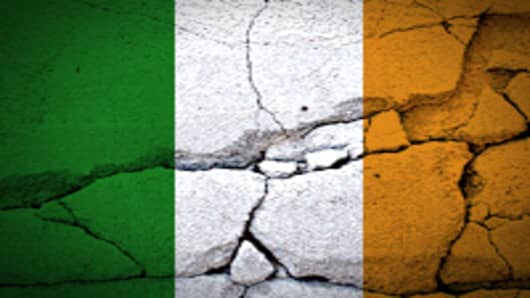Why did Eurozone officials push so hard for a bailout of Ireland?
On the face of it, it was a very strange dynamic. Irish government officials had been insisting that they were well-funded through at least the first quarter of next year. Without any current need to roll debt, Ireland could afford to be indifferent as its spreads blew out. The yields on Irish debt may have blown out, but it wasn’t costing Ireland anything.
The pressure for a bailout of Ireland did not come from Ireland itself—it came from Eurozone officials. If anything, Irish Finance Minister Brian Lehnihan’s announcement over the weekend that Ireland would seek a bailout was a concession to its European Union friends.
So why would the Eurocrats demand a bailout of Ireland when Ireland insisted it didn’t need one?
The first reason is that much of Ireland’s debt—both its sovereign debt and the debt of its banks—is held by many of Europe’s largest financial institutions. The continued downward pressure on the market value of Ireland’s debt was causing balance sheet issues for these banks. Many of Europe’s banks had written credit default swaps on Irish debt, which was draining cash. Finally, the banks were finding it increasingly expensive to borrow against Irish debt—that is, other banks would not lend money in exchange for Irish debt as collateral, except at steep discounts—creating the potential for a credit crunch.
It’s likely that the European Central Bank has large exposures to Irish debt. The ECB has been quietly buying European sovereign debt since May—although it won’t say exactly what debt it is buying. The purpose of the purchases is to stabilize the debt market and provide liquidity to the economies of Europe. The stabilization effort, at least, appears to have failed. Further purchases of sovereign debt in a renewed stabilization effort threaten to become inflationary—essentially the ECB monetizing sovereign debt in Europe. An official bailout may be an attempt to ward off monetization and inflation.
Which means that this is not so much a bailout of Ireland—it’s a bailout of Ireland’s counterparties. That is to say, it’s a bit like Europe’s version of AIG: a backdoor bailout of invisible financial players who failed to manage their exposure to a shaky borrower.
This is going to become an explosive political issue in Ireland—one that may threaten the Irish government’s ability to keep the austerity promises it is likely to make in exchange for the bailout. After all, if the real purpose of the bailout is not so much to rescue Ireland but to rescue the Eurozone financial institutions holding Irish debt, there may be good reason for the Irish people to reject the terms.
Already there are calls for a new election from within Ireland’s ruling party. In Dublin, someone hung a sign over the weekend saying “Traitors” over the official “Department of the Taoiseach (Prime Minister)” sign.
This thing is far from over.
_____________________________________________________
Questions? Comments? Email us atNetNet@cnbc.com
Follow John on Twitter @ twitter.com/Carney
Follow NetNet on Twitter @ twitter.com/CNBCnetnet
Facebook us @ www.facebook.com/NetNetCNBC



